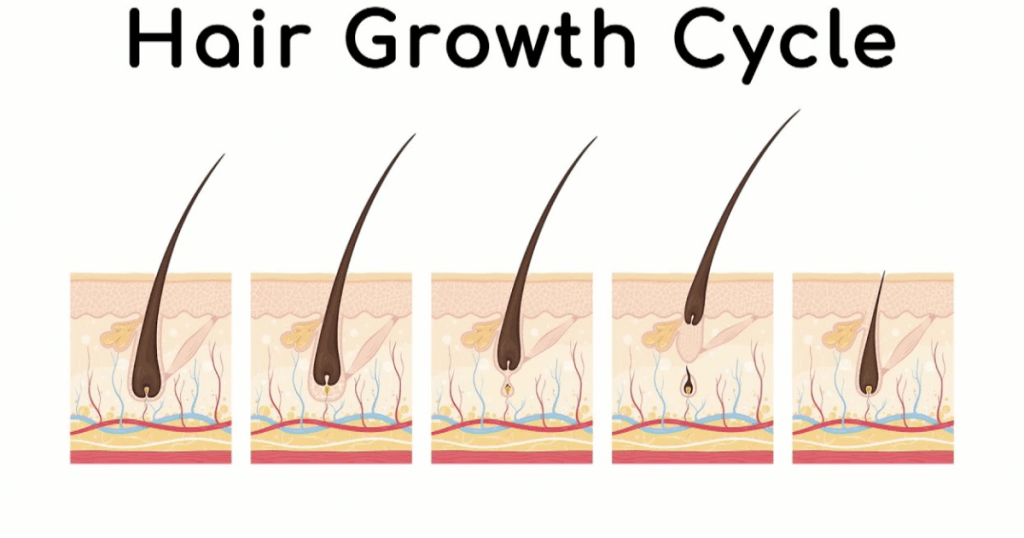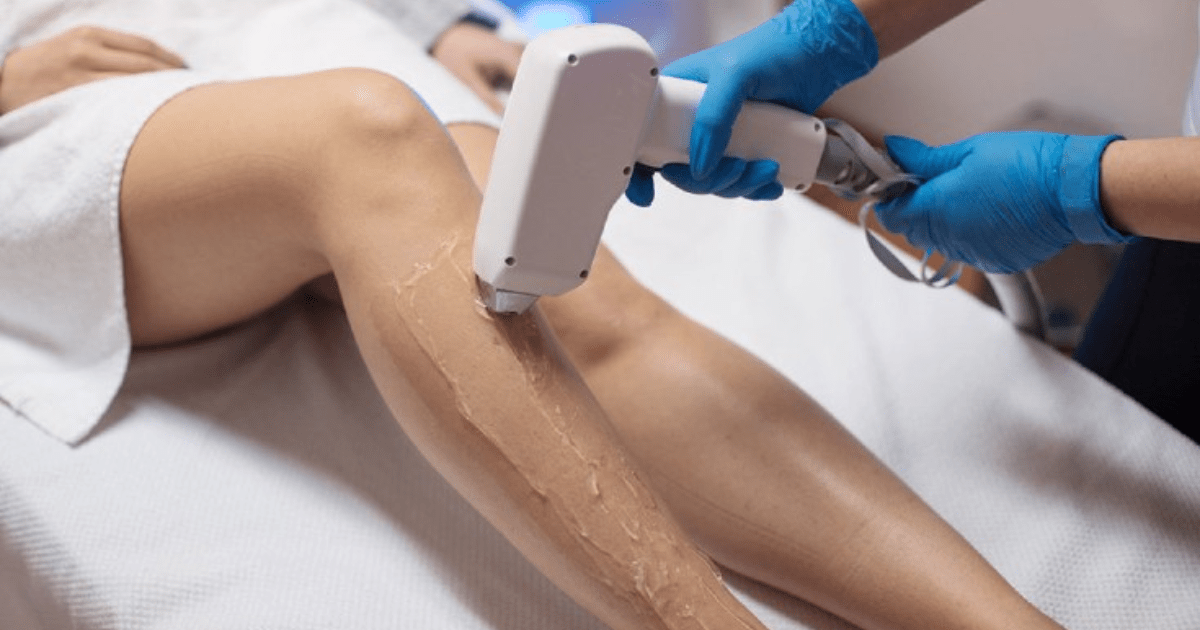Laser hair removal is a popular cosmetic procedure. It uses concentrated beams of light. The purpose is to target and reduce unwanted hair follicles. Laser hair removal provides a long-term solution for reducing hair growth. It can be performed on different body parts such as the face, underarms, bikini line, legs, back, and chest.
So, if you’re wondering, “How long does laser hair removal take?” is a common question among individuals considering this procedure. During this process, a handheld device emits laser energy pulses. The pigment in the hair follicles absorbs these pulses of laser energy. This absorption causes damage to the follicles, hindering their ability to produce new hair. With many sessions, laser hair removal makes hair finer, lighter, and less noticeable. This progressive process leads to a significant reduction in hair growth.
While this process can provide long-lasting hair reduction, it’s important to note that it may not result in permanent hair removal for everyone. Some individuals may experience regrowth over time. However, the new hair is finer and less noticeable. Maintenance sessions can help manage any regrowth and maintain the desired results.
Factors Affecting Treatment Duration
The duration of this process varies. It depends on factors that affect its effectiveness. Here are some key factors to consider:

Area of Treatment
Different body areas have varying densities of hair and surface areas to cover. Smaller areas, such as the upper lip and chin, generally need less time than larger areas, like the legs or back.
Hair Color and Thickness
Its works best on dark, coarse hair because the laser energy targets the pigment in the hair follicles. Light-colored or fine hair may need more sessions or alternative methods for effective results.
Skin Tone
The contrast between the color of the hair and the surrounding skin is essential for the laser to target the hair follicles—individuals with lighter skin and darker hair experience better outcomes.
Hair Growth Cycle
Hair grows in cycles, and laser hair removal is most effective during the active growth phase. Since not all hair follicles grow simultaneously, many sessions are necessary to target each follicle during its operational phase.

Individual Response
Each person’s body may respond differently to laser hair removal. Some individuals may need more sessions to achieve their desired results, while others may react more quickly.
Typical Duration for Different Areas
How long does laser hair removal take? The duration of laser hair removal treatments can vary depending on the area. Here is a general overview of the time it may take for different body areas:
Upper Lip and Chin: Treating the upper lip and chin takes 5 to 15 minutes per session.
Underarm: Underarm hair removal sessions usually last approximately 10 to 20 minutes.
Bikini Lin For the bikini line, each session takes 15 to 30 minutes.
Legs: Laser hair removal for the legs can range from 30 minutes to an hour. It depends on the size of the treatment area.
Back and Chet: The back and chest are larger areas. Laser hair removal treatments for these areas can take 1 to 2 hours.
Preparing for Laser Hair Removal
To ensure a successful laser hair removal experience. It’s essential to prepare before your sessions. Here are some important steps to follow:
Consultation and Patch Test
Before the treatment begins, it’s essential to schedule a consultation. During the consultation, you’ll meet with a certified professional. The purpose is to discuss your goals and assess your suitability for the procedure. A patch test may be performed to determine the optimal settings for your skin and hair type.
Avoid Sun Exposure
Minimize sun exposure and avoid tanning beds. Do this for at least four weeks before your laser hair removal sessions. Sunburned or tanned skin is more prone to complications. This may need to postpone the treatment.
Shave the Treatment Area
Shave the treatment area a day or two before your session. This helps the laser energy gets absorbed by the hair follicles. It avoids wasting energy on surface-level hair.
What to Expect During the Procedure
During a laser hair removal session, there are a few things you can expect:
Sensations and Comfort
The treatment may cause a mild sensation like a rubber band snap or a slight tingling. The discomfort of laser hair removal is generally manageable. If necessary, a numbing cream can be applied before the procedure.
Safety Measures
The practitioner will give you protective eyewear. It is to shield your eyes from the laser. They will also adjust the laser settings according to your skin and hair type to ensure maximum safety and effectiveness.
Aftercare and Recovery
To optimize the results and promote proper healing, follow these aftercare tips:
Post-Treatment Instructions
Follow the specific instructions given by your practitioner. These instructions may include avoiding sun exposure, hot showers, or strenuous activities for a certain period. Apply any recommended post-treatment creams or soothing lotions.
Potential Side Effects
While this process is generally safe, during laser hair removal, you may experience temporary side effects. These can include redness, swelling, and mild discomfort in the treated area. These subside within a few hours to a couple of days.
Long-Term Maintenance
Maintenance sessions are necessary for result maintenance in laser hair removal. These sessions help manage any hair regrowth and ensure long-term hair reduction.
FAQ’s
Is laser hair removal painful?
Laser hair removal may cause some discomfort, but it’s generally well-tolerated. The sensation is often described as a mild snapping or tingling feeling.
How many laser hair removal sessions are required?
The number of sessions needed can vary depending on individual factors. Most people need many sessions.
Are there any risks associated with laser hair removal?
Laser hair removal is generally safe. Potential risks include temporary redness, swelling, or changes in skin pigmentation. Choosing a qualified practitioner and following aftercare instructions can reduce these risks.
Conclusion
Laser hair removal is a promising method for achieving long-term reduced unwanted hair growth. In contrast, it may provide more than instant results. It offers a convenient and effective alternative to traditional hair removal techniques. The duration of laser hair removal varies depending on individual factors. The process involves undergoing many sessions, typically spaced several weeks apart. Individuals can target hair follicles at different growth stages by spacing out the laser hair removal sessions. This approach reduces hair density and thickness over time. So, if you’re wondering, “How long does laser hair removal take?” Laser hair is a progressive process. It requires patience and consistency.
It works by using concentrated beams of light. These beams target the hair follicles. The light damages the follicles. This damage inhibits future hair growth. But, since hair grows in cycles, not all follicles are active simultaneously. Thus, many sessions are necessary to address each follicle during its growth phase. The exact number of sessions and treatment duration can vary based on factors. You can receive personalized guidance on the estimated time frame for your laser hair removal journey. It achieves a gradual reduction in hair growth. It offers long-lasting results. It provides a smoother, more hair-free appearance.








